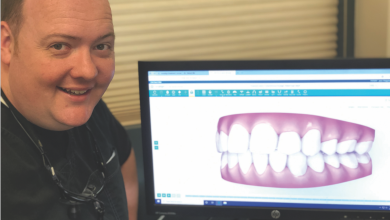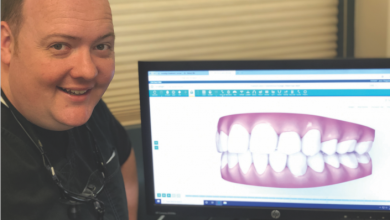Dentistry 101
2014 is the year for dental education. Dental care is an often overlooked area where people can actually save a significant amount of money by incorporating effective preventive strategies into their routine. And, as I mentioned last month, money can be saved in the long run by doing things right in the short run. So I will also discuss what works and what doesn’t in terms of tooth repair. Once an investment has been made in excellent dental care, it is essential to maintain – one wouldn’t buy a Honda because it has a reputation for reliability only to neglect changing the oil and have the vehicle fail years before it should! The mouth also requires maintenance. Lastly, there are many who simply desire a better looking smile – research has demonstrated that the appearance of one’s smile can have a big impact, good or bad, on one’s quality of life and ability to gain employment.
When I speak of prevention, I am referring to preventing cavities, periodontal disease, occlusal disease, and temporomandibular joint dysfunction (TMJD). In my practice, these are the basic areas where problems develop. Everyone is familiar with cavities – basically a hole in a tooth that is filled with pathogenic bacteria. For teeth to remain healthy cavities need to be removed and the resulting hole needs to be repaired. Periodontal disease refers to “attachment loss” around teeth. Bone and gum tissue attaches to teeth at a certain level. In the presence of bacteria and other irritants, bone and gum tissue is damaged and detaches from the teeth, leaving a defect that attracts more bacteria and irritants, and the spiral continues.
Occlusal disease refers to bruxing (grinding) and clenching of the teeth during sleep. Teeth often suffer accelerated wear and/or break due to the extreme pressures placed upon them during this “parafunction.” Occlusal disease and TMJD are often seen together. As the chewing muscles forcefully contract during parafunction, the jawbone is forced up into the jaw joint causing damage to important joint anatomy. Trauma and skeletal aberrations can also contribute to TMJD because they can result in excessive stress on the joint.
There are many ways to repair teeth. The important principle in tooth repair is to select the appropriate repair for the job. Often times, a filling is placed when a crown or cap should be used to restore the natural shape and contours of the damaged tooth. And there are many times when a filling is acceptable and a crown is excessive. The care, skill, and judgment of the dentist are part of what consumers pay for. Any dentist can do something. Take time to find a dentist whose care, skill, and judgment you trust. It is well worth the extra expense.
Sometimes teeth are lost – it could be extensive decay; or it could be severe periodontal disease; perhaps trauma. Maybe the individual just didn’t have the tooth or teeth to begin with. When we talk of replacing teeth, there are several methods available. Some people will have removable dentures made – these are teeth mounted on a framework that can be taken in and out of the mouth. Others may choose to have what is called a bridge – a series of connected crowns that “bridges” the gap created by the missing tooth. Dental implants are another option – man-made titanium tooth roots that are implanted in the jawbone to support teeth that are placed upon them.
Mouth maintenance is a broad topic. Think of it simply as a skill. Someone taking piano lessons will typically employ a teacher to help them learn and improve. Similarly, cleaning one’s mouth effectively is a skill that takes time to develop and time to perform. With practice, it becomes easier and more efficient. Think of the dental hygienist as a dental health coach – the hygienist can observe and make suggestions on how to improve. S/he can even demonstrate various techniques for cleaning difficult areas during a hygiene visit.
Cosmetic dentistry is an area of dentistry that holds interest for many people. It can be as simple as wanting a whiter smile and as complex as wanting a complete smile makeover with veneers and crowns. Orthodontics (braces) can also be used to improve the appearance of one’s smile. A great smile can create confidence, increase self-esteem/image, and improve quality of life. A smile is a very personal character trait that has a huge impact on our lives.
Each month this year, I will be going into greater depth on each of these topics. It is my hope that this will improve the awareness and dental health of readers and serve as a useful resource to all in the community.
You’re never fully dressed without a smile ;^)


